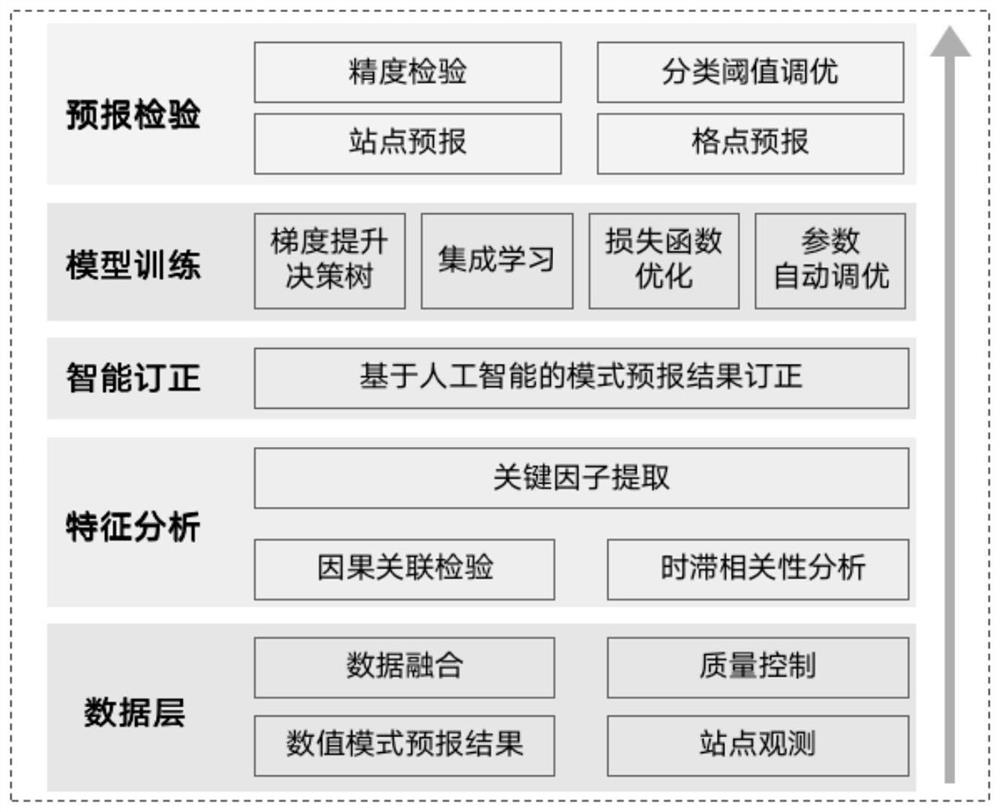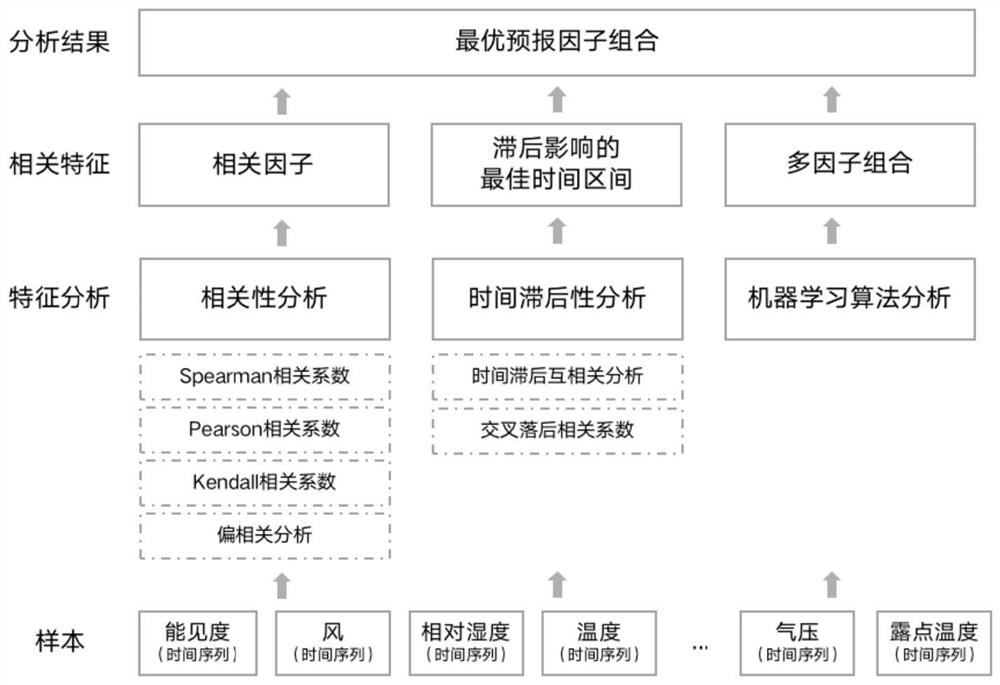Sea fog level intelligent forecasting method and system
A forecasting system and intelligent technology, applied in marine science and atmospheric fields, can solve problems such as the inability to accurately reflect multi-variable interactions in the atmospheric and oceanic fields, and achieve the effect of improving forecasting skills at low visibility levels
- Summary
- Abstract
- Description
- Claims
- Application Information
AI Technical Summary
Problems solved by technology
Method used
Image
Examples
Embodiment 1
[0062] refer to Figure 1-10 , a sea fog level intelligent forecasting system and method, comprising the following steps:
[0063] S1. Collection of numerical model forecast results and routine observation data of meteorological stations, as well as fusion and quality control of collected data;
[0064] S101. Prepare the routine observation data A1 of meteorological stations from 2016 to 2020. The elements include: sea level pressure, wind speed, air temperature, dew point, visibility, 1-hour precipitation, 3-hour precipitation, 6-hour precipitation, and 24-hour precipitation ;
[0065] S102. Prepare the numerical model forecast data A2 from 2016 to 2020. The elements are divided into ground field and high-altitude field. Ground field elements include: sea level pressure, variable pressure, temperature, humidity, wind direction and wind speed; high-altitude field elements include: 500hPa, 700hPa , 850hPa, 925hPa, 1000hPa isobaric surface potential height, temperature, dew po...
Embodiment 2
[0098] The system scheme is as figure 1 As shown, it includes five modules including data layer, feature analysis, intelligent correction, model training, and forecast inspection; the main invention point is the organic fusion of five modules to form a sea fog level intelligent forecast method and system; the first layer of data layer is responsible for The collection of numerical model forecast results and site observation data, as well as the fusion and quality control of collected data; the feature analysis layer is mainly used to extract key meteorological elements that affect visibility. Feature analysis methods include at least Pearson correlation coefficient test, causality test, Time-lag correlation analysis, etc.; the intelligent correction layer is responsible for correcting the key meteorological elements in the numerical model forecast results by using machine learning correction methods based on a large number of station observation data; the model training layer i...
Embodiment 3
[0110] Such as Figure 8-9 As shown, taking the visibility level forecast of 27 meteorological observation stations in the Yangtze River Estuary as an example, the effect of the invention is explained; among them, the model forecast is the result of visibility diagnosis by the operational operation of the WRF model, and the intelligent forecast is the result of the intelligent forecast of visibility based on the LightGBM algorithm , it can be seen through the comparison of ETS scores of different forecasting timeliness that for different forecasting timeliness, the visibility level intelligent forecasting technique of the present invention is better than the general numerical forecasting diagnosis method; Increased by more than 1.5 times.
PUM
 Login to View More
Login to View More Abstract
Description
Claims
Application Information
 Login to View More
Login to View More - R&D
- Intellectual Property
- Life Sciences
- Materials
- Tech Scout
- Unparalleled Data Quality
- Higher Quality Content
- 60% Fewer Hallucinations
Browse by: Latest US Patents, China's latest patents, Technical Efficacy Thesaurus, Application Domain, Technology Topic, Popular Technical Reports.
© 2025 PatSnap. All rights reserved.Legal|Privacy policy|Modern Slavery Act Transparency Statement|Sitemap|About US| Contact US: help@patsnap.com



